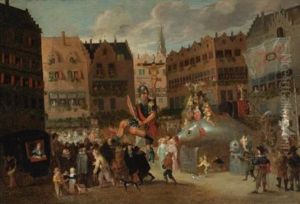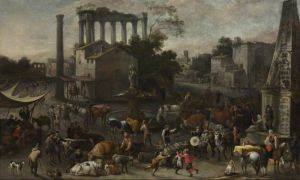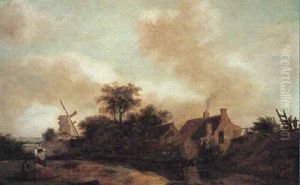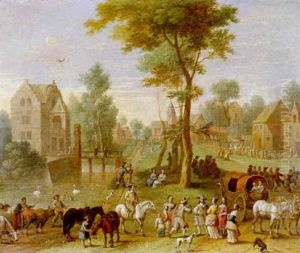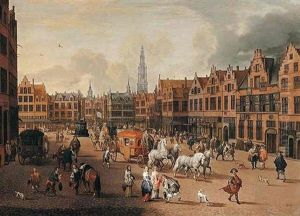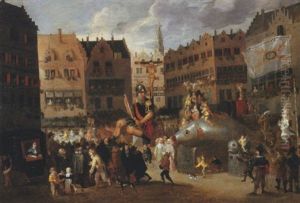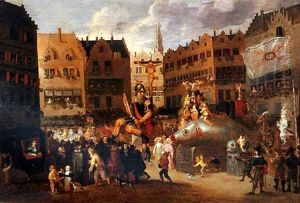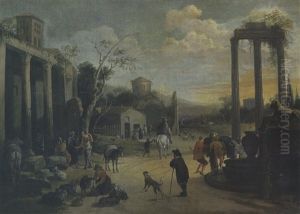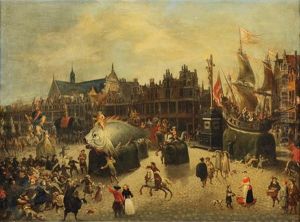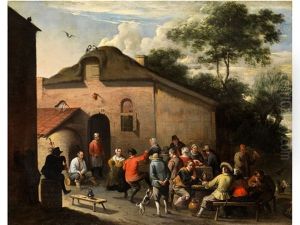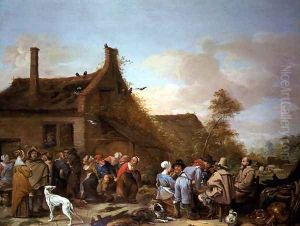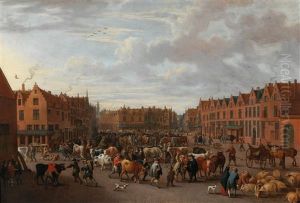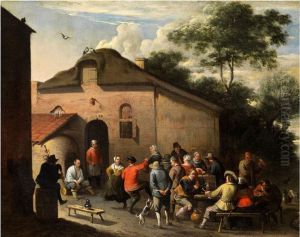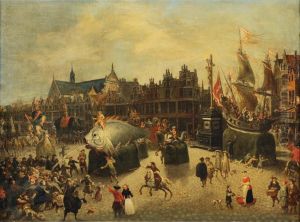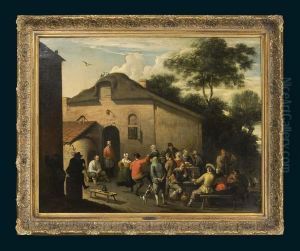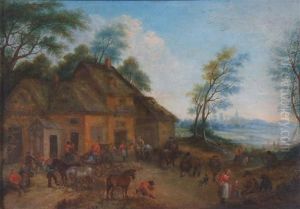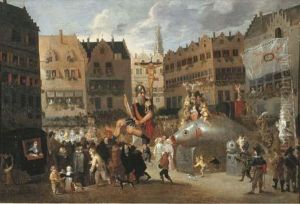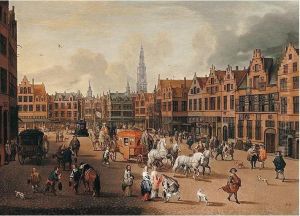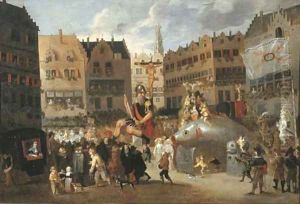Erasmus de Bie Paintings
Erasmus de Bie was a Flemish painter born in 1629, known for his work during the Baroque period. He was the son of the painter and engraver Ferdinand de Bie and was likely trained by his father in their hometown of Antwerp. The de Bie family was part of the vibrant artistic community in Antwerp, which was a significant European center for art and culture during the 17th century.
Erasmus de Bie specialized in landscape and cityscape paintings, often infused with allegorical and mythological elements. His works are characterized by their intricate detail, vivid imagination, and the skillful incorporation of human figures within the landscape. De Bie's paintings often reflected the influence of other prominent Flemish artists of the time, such as Jan Brueghel the Elder and David Teniers the Younger.
Though not as widely recognized as some of his contemporaries, de Bie contributed to the rich tapestry of Flemish painting. He was a member of the Guild of Saint Luke in Antwerp, the city's association of painters, sculptors, engravers, and other artists. Through this guild, he would have engaged with the exchange of artistic ideas and techniques that were central to the development of Flemish art during the period.
Erasmus de Bie's career unfolded during a time of great social and political turmoil, as the Thirty Years' War (1618–1648) had brought significant upheaval to the region. Despite this, the arts continued to flourish in the Spanish Netherlands, particularly under the patronage of the church and the aristocracy, which allowed artists like de Bie to pursue their craft.
De Bie's work was appreciated during his lifetime, and his paintings found an audience among the wealthy citizens and art collectors of Antwerp. Today, his works can be found in various art museums and private collections, where they continue to be studied and appreciated for their contribution to the Baroque movement in Flemish art. Erasmus de Bie passed away in 1675, leaving behind a legacy that, while modest compared to some of his peers, remains a part of the rich artistic heritage of Flanders.
